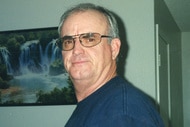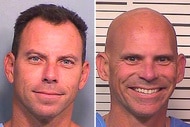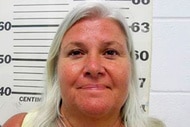Create a free profile to get unlimited access to exclusive videos, breaking news, sweepstakes, and more!
'Brighton Ax Murderer' Dies Months after Being Convicted for Wife's 1982 Murder
James Krauseneck, 71, was sentenced to 25 years to life in prison for the 1982 killing of his wife Cathy Krauseneck.

A 71-year-old New York man known as the "Brighton Ax Murderer," who was found guilty last year of killing his wife in 1982, died in prison this week.
James Krauseneck was sentenced to 25 years to life in prison in September after his conviction on second-degree murder charges for killing 29-year-old Cathleen Krauseneck, Oxygen.com previously reported. Cathleen was fatally struck in the head with an axe.
Michael Wolford, Krauseneck's attorney, told WHAM-TV that the accused killer was diagnosed with esophageal cancer in prison, leading to a rapid 80-pound weight loss and, ultimately, and his death Friday.
RELATED: Woman Killed Grandfather Who Was In Her Care, Hid Body In Tool Box In Trash Pit
“I’m disappointed that he passed away so early, but I hope he enjoys himself in hell," Bob Schlosser, the slain woman's father, told radio station 13WHAM.
Krauseneck was in the midst of an appeal. Because he died before that appeal could be heard, by state law, his conviction will be vacated, according to Law and Crime.
How did Cathleen Krauseneck die?
Prosecutors maintain that Krauseneck killed his wife of eight years on the morning of Feb. 19, 1982, while she slept in their shared home in Brighton, a suburb of Rochester. The murder weapon – a long-handled axe – was left lodged in Cathleen's skull. The couple's 3-year-old daughter, Sara, was left in the home with her mother's body, though she was unharmed.
Krauseneck insisted his wife was alive when he left home for work that morning. Krauseneck told police that he came home from his job as an economist at Kodak to find his home in disarray and Cathy dead.
Sara Krauseneck - who told police that she saw a "bad man" on the day her mother died – stood by her father's assertion that he was innocent throughout his trial, according to CBS News.
Krauseneck wasn't charged until November 2019. But the case against Krauseneck was circumstantial – prosecutors said the crime scene was staged to look like a burglary and that evidence – including the handle of the axe lodged in Cathleen Krauseneck's skull – had been wiped clean of fingerprints.
A key development in prosecutors seeking a grand jury indictment was a change in their understanding of the Cathleen's time of death. An early medical examiner's note indicated she died between 6:55 and 8:55 a.m. Krauseneck told authorities he left for work that morning at 6:30 a.m., providing him with a solid alibi. However, in 2018, prosecutors sought the opinion of Dr. Michael Baden, a former New York City medical examiner who has worked several high-profile cases and whose work has generated controversy. According to Baden's new analysis, Cathleen's time of death was around 3:30 a.m., well before Krauseneck's stated departure time for work, according to CBS News. That new detail, plus no other DNA evidence found at the scene that could point to an alternative suspect, gave prosecutors the confidence to present the case to a grand jury, which voted to indict.
However, Krauseneck's, Michael Wolford, told WHAM that he was "sure the appellate division would have vacated [Krauseneck's] conviction for a number of reasons, not the least of which is, there was no justification to wait 37 years to bring an indictment."
"I was convinced that he was innocent back on March 1, 1982, a few days after that murder when I first met Jim and discussed this case with him," the attorney told the outlet. "My opinion hasn't changed one iota, and I feel very bad it has ended in this fashion."
Even though her sister's killer only served six months of his sentence, Annet Schlosser told the Democrat & Chronicle that she felt "karma was done" because he "died an undignified death behind prison walls."
"The entire world knows that he killed my sister, and he died knowing that," she told the newspaper.

























